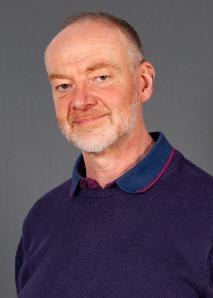Biography
Biography
My first degree was in Natural Sciences (University of Cambridge), specialising in Physics. After working at the National Physical Laboratory in Teddington, I obtained an MSc in Medical Physics from the University of Aberdeen, and then did my PhD at the University of Bristol, while employed by the National Health Service at Bristol Oncology Centre to work on hyperthermia treatment and dielectric imaging.
I joined the Department of Electronics (now part of the School of Physics, Engineering and Technology) in 1993 as a Research Fellow and have stayed here ever since, apart from a short spell in the Medical Cryobiology Unit. I am currently a Senior Lecturer in the Communication Technologies Group, doing research in Applied Electromagnetics and teaching at undergraduate and postgraduate level. For details of my current teaching and research, please click on the tabs to the right.
My administrative roles have included Chair of the Graduate Schools Board for Electronics and Chair of the Physical Sciences Ethics Committee (PSEC). More recently I have served on Standing Panels for Academic Misconduct and been the Coordinator for MEng final-year projects.
Teaching
Teaching
At undergraduate level I have taught Fundamentals of Electronic Measurements (Foundation Year), Maths for Music Technology (First Year), Links, Networks & Protocols (First Year), Design, Construction & Test (Second Year), Distributed Circuits (Third Year), Propagation (Third Year), EM Waves (Third Year), Applications of EM (Third Year) and Electronics for Medicine (Fourth Year). I also supervise a number of final-year projects each year – some on topics related to my research, some from personal interests and others suggested by students.
At postgraduate level I teach a module on Matlab and supervise groups in our MSc in Engineering Management. I also supervise students on PhD and MSc-by-research programmes
I used to deliver training courses on electromagnetic compatibility (EMC), electromagnetic fields and related subjects for Eurofins York (formerly York EMC Services) - topics included EMC Design, Conducted Interference, Transmission Lines and Shielded Enclosures.
Research
Research
My main interest is applying microwave and radio frequency techniques to a wide range of problems including medical diagnosis and therapy, environmental sensing of pollutants and object identification in archaeology. I also work with colleagues in the Communication Technologies Group on research into electromagnetic compatibility and shielding. Some current/past research areas include:
- a non-invasive method of measuring the dielectric properties of irregularly-shaped solids, which can be used by archaeologists to help identify artefacts made of pottery, flint or bone;
- a microwave sensor for measuring water quality, which can respond not only to dissolved impurities but also to suspensions of micro-plastics;
- developing statistical models for electromagnetic fields inside reverberant enclosures (such as aircraft) - this has practical applications in determining effects on radio propagation as well as assessing human exposure to the fields;
- electromagnetic methods of studying body composition, in particular a novel method of measuring total body water: this research was done in collaboration with John Truscott and colleagues at Leeds General Infirmary, and more recently with Karen Hind at Leeds Beckett University;
- novel therapeutic techniques involving electromagnetic pulses applied to cell membranes: these create temporary pores that enable drugs etc. to enter the cell (electroporation);
- electromagnetic heating and dielectric measurements of cryopreserved (frozen) tissues and organs, in collaboration with the former Medical Cryobiology Unit at the University of York;
- radio frequency interference to medical devices (e.g. from mobile phones), and spectrum management in hospitals
- equivalent circuit models for EM shielding, which give comparable levels of accuracy while running much faster than full-wave solvers.
External
External
As a member of the Institute of Physics and Engineering in Medicine (IPEM), I have served on various Special Interest Groups: Clinical Engineering, Ultrasound & Non-Ionising Radiation and Physiological Measurement (CESIG, UNIRSIG and PMSIG). I chaired the working party that produced IPEM Report 98, “Guidance on the Measurement and Use of EMC and EMF.”
I am also a member of the Institute of Physics (IoP), and served on the committee of the Medical Physics Group (MPG) of the IoP. I am a member of the Society for Low-Temperature Biology (SLTB). I was UK Representative for Commission K, and later Secretary, of the UK Panel for the International Union of Radio Science (URSI).

